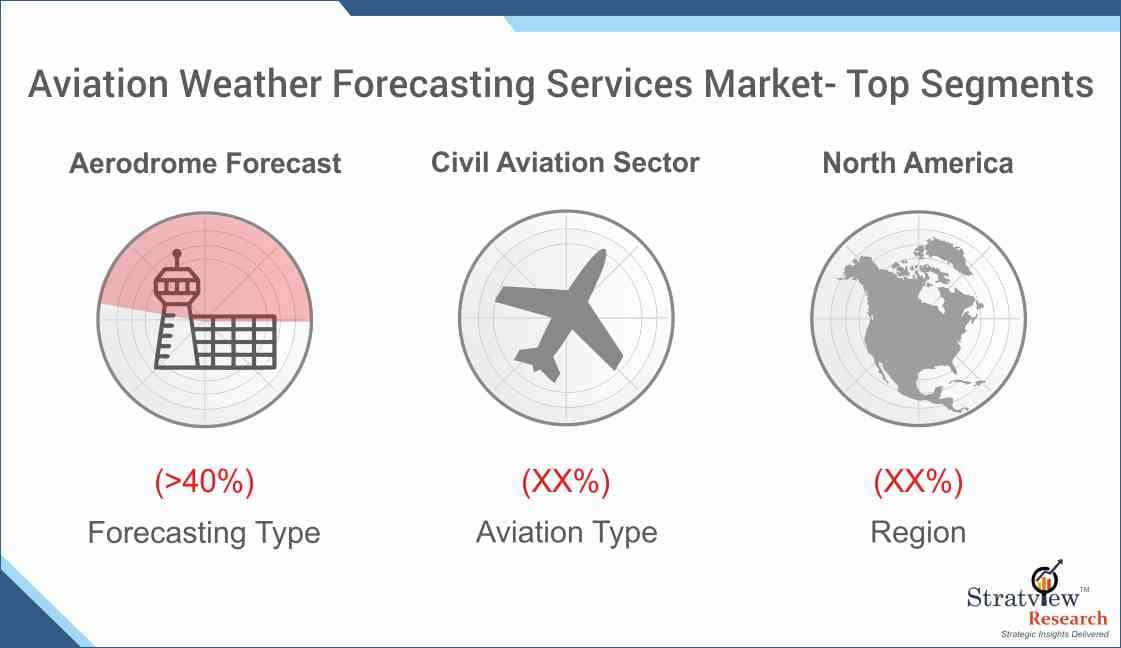The Role of Aviation Weather Forecasting Services in Enhancing Flight Safety

Aviation weather forecasting services play a critical role in ensuring the safety of air travel by providing real-time, accurate weather data that allows airlines, air traffic controllers, and pilots to make informed decisions. The ability to predict weather patterns, including turbulence, storms, low visibility, and wind shear, significantly reduces the risk of in-flight accidents and operational disruptions. As the aviation industry continues to grow, the importance of these services in ensuring flight safety has never been more pronounced.
Stratview Research estimates that the aviation weather forecasting services market is projected to grow at an impressive growth rate over the next five years to reach US$ 447.6 million in 2024. This growth is driven by the increasing demand for advanced forecasting systems and the need for more accurate, real-time weather data to enhance flight safety.
Request a sample report to preview our in-depth analysis:
The Importance of Weather Forecasting in Aviation Safety
- Turbulence Prediction and Management: One of the most significant risks during flight is turbulence, which can lead to injuries to passengers and crew and cause significant operational delays. Accurate weather forecasting services are crucial for detecting and predicting turbulence patterns. Advanced weather radar systems and satellite imagery provide real-time data on atmospheric conditions, allowing pilots to adjust flight paths and avoid turbulent areas, ensuring the safety of the flight.
- Storm and Lightning Detection: Severe storms, including thunderstorms, pose a significant risk to flight safety. Advanced forecasting services allow airlines and air traffic controllers to track storm systems, including the risk of lightning, hail, and high winds. By avoiding these areas, airlines can reduce the risk of damage to aircraft and improve passenger safety.
- Low Visibility and Icing Conditions: Low visibility and icing conditions are critical factors that can impact flight safety, particularly during takeoff and landing. Aviation weather services provide forecasts and real-time data on fog, ice formation, and low clouds, helping pilots make informed decisions regarding flight paths and landing approaches. This data allows pilots to navigate safely through challenging weather conditions and land safely.
Market Drivers for Aviation Weather Forecasting Services
- Increasing Air Traffic: As air traffic continues to grow, especially in Asia-Pacific, Europe, and North America, the demand for reliable weather forecasting services to ensure safe flight operations is rising. Weather services help airlines avoid delays, cancellations, and accidents, improving efficiency and safety across the aviation network.
- Improved Forecasting Technologies: The growing adoption of advanced technologies, such as AI-based weather prediction, high-resolution satellite systems, and real-time weather radars, is improving the accuracy and timeliness of weather forecasts. These innovations allow for better decision-making during flight planning and in-flight operations, enhancing safety.
- Increasing Focus on Passenger Safety: Airlines are increasingly focusing on passenger safety to build customer trust and comply with international regulations. The growing emphasis on safety standards and the demand for better flight experience is driving the need for advanced weather forecasting systems that minimize risks posed by adverse weather conditions.
Challenges and Opportunities
- High Cost of Implementation and Maintenance: The cost of implementing and maintaining advanced weather forecasting systems can be high, especially for smaller airlines or countries with limited resources. While the return on investment in safety is significant, the cost barriers remain a challenge, particularly in emerging economies.
- Integration and Data Sharing: Ensuring seamless data sharing between weather services, air traffic management systems, and airline systems is a challenge that needs to be addressed for improved flight safety. Integrating weather data from different sources can help create a comprehensive view of potential hazards, improving decision-making.
Conclusion
The Aviation Weather Forecasting Services Market is growing rapidly, driven by the increasing demand for reliable, real-time weather data to enhance flight safety. As technologies continue to improve, weather forecasting services will remain a critical part of the aviation sector, ensuring safer, more efficient air travel for passengers and airlines alike.
- Questions and Answers
- Opinion
- Motivational and Inspiring Story
- Technology
- Live and Let live
- Focus
- Geopolitics
- Military-Arms/Equipment
- الحماية
- Economy
- Beasts of Nations
- Machine Tools-The “Mother Industry”
- Art
- Causes
- Crafts
- Dance
- Drinks
- Film/Movie
- Fitness
- Food
- الألعاب
- Gardening
- Health
- الرئيسية
- Literature
- Music
- Networking
- أخرى
- Party
- Religion
- Shopping
- Sports
- Theater
- Health and Wellness
- News
- Culture

